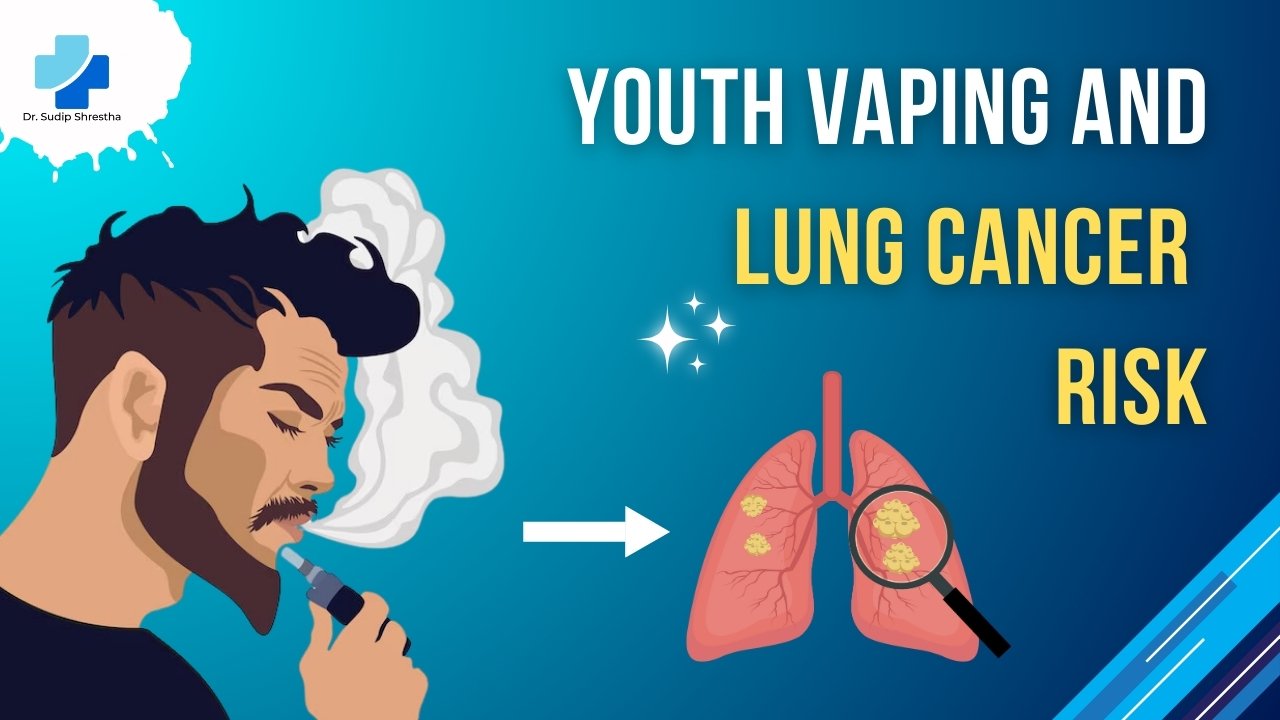The rapid rise of vaping among youth has sparked major health concerns. Although marketed as a safer alternative to traditional smoking, vaping exposes users especially young people to numerous chemicals that could have long-term health consequences, including an increased risk of lung cancer. Dr. Sudip Shrestha, a respected oncologist and cancer care expert, is dedicated to raising awareness of these potential dangers. In this article, we’ll explore the health risks associated with youth vaping, with insights from Dr. Shrestha on why young people should avoid this dangerous trend.
Understanding Youth Vaping Trends
Vaping was initially developed as an alternative for adult smokers seeking to quit traditional cigarettes. However, e-cigarettes quickly gained traction among young people, with youth vaping rates now reaching concerning levels worldwide. Studies reveal that over 20% of high school students in many countries have used e-cigarettes, often attracted by flavored e-liquids that mask the harshness of nicotine with fruity, sweet, or dessert-like tastes.
While some may believe vaping is harmless or just “water vapor,” it’s important to understand the potentially dangerous chemicals it introduces into the lungs. According to Dr. Shrestha, “The lack of regulation on vaping products and the misinformation around its safety have created a perfect storm for youth addiction, potentially leading to severe health risks.”
The Chemicals in Vaping and Their Impact on Lungs
One of the biggest misconceptions about vaping is that it’s “just flavored vapor.” In reality, e-cigarette aerosols often contain a mix of chemicals, including nicotine, flavoring agents, and solvents like propylene glycol and glycerol. When heated, these ingredients produce chemicals such as formaldehyde, acetaldehyde, and acrolein, which are known to irritate and damage lung tissue.
Dr. Sudip Shrestha highlights the risks of inhaling these substances: “The chemicals inhaled through vaping can reach deep into the lungs, causing irritation, inflammation, and potentially leading to chronic respiratory issues.” The effects are especially concerning for young users whose bodies, including their lungs, are still developing, making them more vulnerable to the toxic effects of these chemicals.
Lung Cancer Risk in Young Vapers: Expert Insight from Dr. Sudip Shrestha
As one of Nepal’s leading oncologists, Dr. Shrestha’s expertise underscores the link between harmful habits and increased cancer risks. “Lung cancer remains one of the most deadly cancers globally, with survival rates still low in late-stage diagnoses,” he explains. For young people who vape, the exposure to potentially cancer-causing agents at an early age could set the stage for serious health risks later in life.
Dr. Shrestha emphasizes that while vaping products have not been around long enough to track long-term cancer risk accurately, the early signs are concerning. Animal studies have shown DNA damage in lung cells exposed to e-cigarette vapor, and certain chemicals in vaping products have carcinogenic properties. Starting vaping at a young age may increase the risk of DNA mutations and respiratory damage that could eventually lead to lung cancer, especially with prolonged exposure.
Immediate and Long-Term Health Effects of Vaping
Youth who vape may experience a variety of immediate health effects, including shortness of breath, chronic coughing, and decreased lung function. Some users have developed severe lung conditions, diagnosed as “e-cigarette or vaping product use-associated lung injury” (EVALI), which can require hospitalization. While most recover, some have been left with long-term respiratory damage.
In the long run, vaping may increase the risk of chronic respiratory illnesses, weakened immune response in the lungs, and even a higher likelihood of nicotine addiction. Dr. Shrestha warns that these impacts on lung health could compound over time, as chronic inflammation or scarring can weaken lung tissue and make individuals more susceptible to serious conditions, including cancer.
Preventative Measures and Raising Awareness
Dr. Shrestha is committed to educating the public on the dangers of vaping, particularly for young people. Parents, educators, and healthcare providers play a crucial role in raising awareness and discouraging youth from taking up this risky habit. “It’s vital to counter the misinformation that vaping is safe, especially as young people may be more vulnerable to marketing and peer pressure,” Dr. Shrestha stresses.
Efforts to reduce youth vaping include stricter regulations on e-cigarette advertising, restricting access to flavored products, and creating educational campaigns in schools. In Nepal, Dr. Shrestha and his team at Nepal Cancer Hospital and Research Center have been working to address these issues through public health initiatives, stressing the importance of avoiding habits that can lead to preventable cancers.
Conclusion: The Need for Caution Among Youth
Vaping may seem harmless to young people, but the reality is that it exposes them to harmful chemicals with potentially serious consequences, including a heightened risk of lung cancer. Dr. Sudip Shrestha’s insights underscore the importance of caution and awareness about the hidden dangers of vaping.



